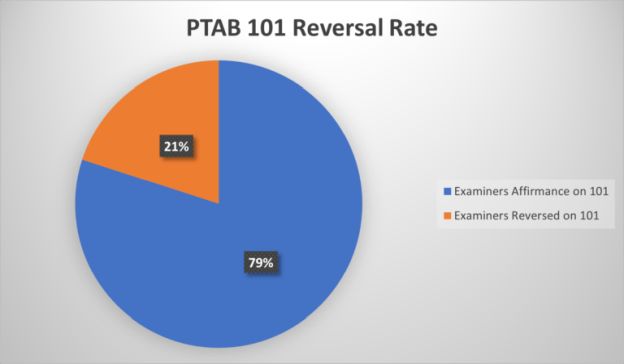- with readers working within the Technology industries
The Federal Circuit held that claims directed to digital data compression are not patent eligible. Realtime Data LLC v. Array Networks Inc., Case No. 2021-2251 (Fed. Cir. Aug. 2, 2023).
Realtime filed suit alleging infringement of seven patents against Array Networks. The patents are U.S. Patent Nos. 9,054,728 ('728 patent), 8,933,825 ('825 patent), 8,717,203 ('203 patent), 9,116,908 ('908 patent), 7,415,530 ('530 patent), 10,019,458 ('458 patent), and 9,667,751 ('751 patent). All relate to methods and systems for digital data compression overcoming the problem of selecting the best compression method for given data. Array Network argued that the patents were patent ineligible under 35 U.S.C. § 101.
A representative claim 18 of one of the patents (e.g., '825 patent) recites:
18. A method comprising:
associating at least one encoder to each one of a plurality of
parameters or attributes of data;
analyzing data within a data block to determine whether a parameter
or attribute of the data within the data block is identified for
the data block; wherein the analyzing of the data within the data
block to identify a parameter or attribute of the data excludes
analyzing based only on a descriptor that is indicative of the
parameter or attribute of the data within the data block;
identifying a first parameter or attribute of the data of the data
block;
compressing, if the first parameter or attribute of the data is the
same as one of the plurality of parameter or attributes of the
data, the data block with the at least one encoder associated with
the one of the plurality of parameters or attributes of the data
that is the same as the first parameter or attribute of the data to
provide a compressed data block; and
compressing, if the first parameter or attribute of the data is not
the same as one of the plurality of parameters or attributes of the
data, the data block with a default encoder to provide the
compressed data block.
The district court determined that the claims of the asserted patents are centered around the abstract idea of manipulating information using compression. As a result, the court ruled that all of these claims are invalid under Section 101 for lack of subject matter eligibility. Realtime appealed.
Section 101 of the Patent Act states that individuals can obtain a patent for new and useful processes, machines, manufactures, compositions of matter, or improvements thereof. However, there is an exception that prohibits the patenting of laws of nature, natural phenomena, and abstract ideas. The Supreme Court has established a two-step test known as the "Alice" test to evaluate patent eligibility in cases involving potentially ineligible subject matter. According to the "Alice" test, a claim is considered ineligible under § 101 if it (1) is directed to an abstract idea, and (2) lacks the necessary elements to transform it to a patent-eligible application of the abstract idea. This was discussed in the case of SAP Am., Inc. v. InvestPic, LLC, 898 F.3d 1161, 1166–67 (Fed. Cir. 2018).
Realtime argued that the claims of the asserted patents are directed not to abstract ideas, but rather to specific improvements to digital data compression. They contend that these claims go beyond simply applying an abstract mathematical formula or a common business practice on a general-purpose computer. The district court disagreed with Realtime's arguments. It determined that the asserted patents do not offer a technologically complex, specific method for compression. Instead, they merely describe abstract ideas with general instructions for their application. The court noted that the claims do not provide guidance on how to engineer an improved system, analyze data, or achieve the claimed benefits in efficiency.
The Federal Circuit agreed with the district court's decision. It noted that for a claim to be eligible, it must specify a concrete way of achieving a functional result, rather than simply claim the result itself. In this case, none of the claims provide specific techniques for data compression. They assume the availability of compression techniques and focus on the selection of one or more of these techniques.
The asserted patents were divided into three families. Examining the family 1 patents, including claim 18 recited above, the Court noted that neither the claim nor the specification clarifies how the data is to be analyzed or compressed. The claim, for example, does not recite whether it analyzes data to determine the data's complexity, length, structure, or type. The only guidance given is that the analysis cannot be solely based on a descriptor. However, this minimal narrowing doesn't make the claim less abstract, as ruled in BSG Tech LLC v. Buyseasons, Inc., 899 F.3d 1281, 1287 (Fed. Cir. 2018).
Turning to the family 2 patents, the representative claim of the '908 patent describes a system that requires a "data accelerator" to compress data using different compression techniques. The compressed data blocks are stored on the memory device, and this compression and storage process occurs faster than storing the uncompressed data alone. However, the claim does not specify the exact compression techniques used or how the data accelerator selects these techniques. The specification simply mentions that any conventional, well-known, or widely used compression technique can be utilized. Additionally, it does not explain how the storage of the compressed data happens faster.
Moving on to the family 3 patents, the representative claim of the '751 patent outlines a method that involves analyzing the content of a data block to identify a parameter, attribute, or value, excluding the analysis solely based on reading a descriptor. An encoder is then selected based on that parameter, and the data is compressed at a certain rate using a state machine. The compressed data is stored, and the compressing and storing process is completed in less time compared to that for storing the data in its uncompressed form. However, like the claims of the family 2 patents, claim 1 of the '751 patent does not explain how to achieve this result.
In summary, the Court held that the claims of the asserted patents can be categorized as "data manipulation" claims that are stated at a high level of result-oriented generality. They lack sufficient explanation of how the supposed inventions achieve these results. Because it concluded that the asserted claims are directed to abstract ideas, the Court turned its attention to Alice step two to determine if the claims go beyond abstract ideas. An "inventive concept" is necessary for the claims to amount to more than just the abstract ideas themselves. The inventive concept must be more than well-understood or conventional activities and can be found in the unique arrangement of known elements.
Realtime argued that their inventions provide unconventional solutions that improve computer functionality and overcome specific problems in digital data compression. Realtime also argued that analyzing data to identify one or more parameters or attributes and compressing it using different encoders based on that analysis is a non-conventional function and is the inventive concept of the patents. In response, the Court asserted that these statements are simply reassertion of the desired result without specifics.
The Dissent
Justice Newman wrote it is important to acknowledge
that § 101 was not originally meant to prohibit these
categories of inventions. The courts have unnecessarily and
confusingly created a judicial exception to eligibility. In her
opinion, this case is a clear case of enablement and not §
101. Therefore, she dissented and would have remanded for further
evaluation of validity under § 112 or even §§ 102
and 103.
Practice Tips:
Tip 1: To effectively navigate a 101 challenge, it is crucial to present your strongest arguments upfront to prevail in the first step of the Alice test. Failing the first step greatly diminishes chances of success in step two. One argument that can be helpful in prevailing in step two, as outlined in the USPTO guidelines on patent eligibility, is to demonstrate that the claims include specific limitations that go beyond what is well-understood, routine, and conventional in the field. However, in this particular case, the Court dismissed this argument without providing a solid reasoning. Realtime, for instance, argued that their approach of analyzing data, identifying parameters or attributes, and using multiple encoders for compression is a non-conventional. They claimed that this innovative approach is the "inventive concept" clearly described in the patents' common specification. However, the Court rejected this argument, stating that these ideas are abstract and cannot be considered as an inventive concept.
Tip 2: When dealing with software-based inventions, the initial element of the Alice/Mayo test typically examines whether the claims highlight a particular enhancement in computer abilities or if they simply utilize computers as tools for an abstract process. Thus, when drafting claims, practitioners should emphasize the technical features and explain how the functionality is achieved from a technical perspective, rather than relying on broad functional statements. Additionally, in the specification, practitioners should refrain from using computers solely as a means to implement an abstract idea. Instead, they should focus on describing the computers as specialized computers that offer a specific technical solution to the technical problem. In this case for example, in support of finding patent ineligibility, the Court noted that the specification does not purport to require the use of any special processor, citing to various sections of the specification describing that the solution can be implemented by a general purpose computer or any machine or device having any suitable microprocessor architecture.
Tip 3: Take a look at the graph provided below to understand how frequently PTAB 101 rejections have been overturned. The data reveals that the 101 rejection is upheld in about 80% of cases. By choosing to collaborate with the Examiner rather than pursuing an appeal, you can save both time and money while increasing your chances of securing a case allowance. This is why our firm conducts interviews for every case.

The content of this article is intended to provide a general guide to the subject matter. Specialist advice should be sought about your specific circumstances.


